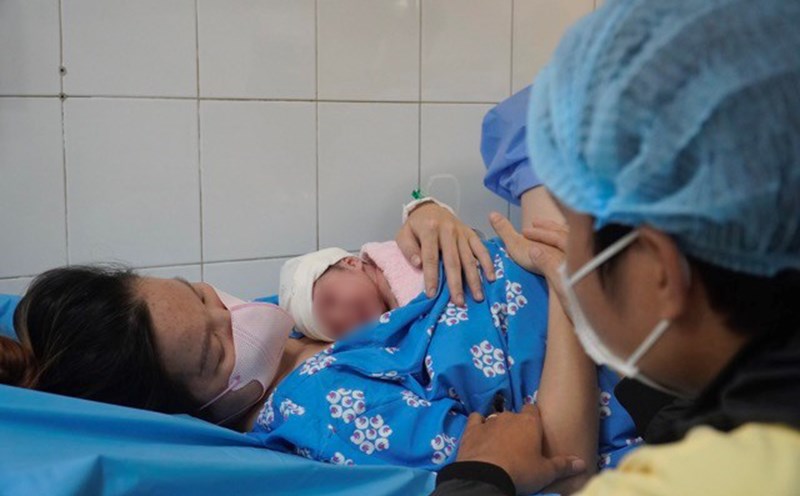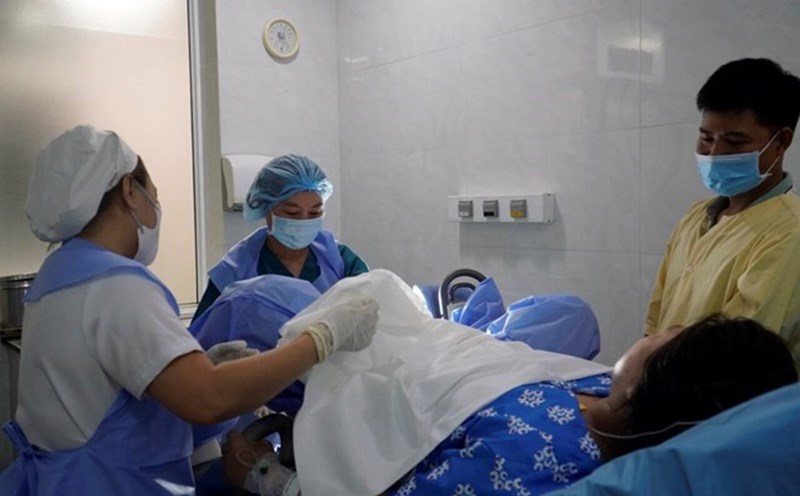Population picture after the merger
Leading the group of localities with the lowest birth rate is Ho Chi Minh City, with TFR reaching only 1.43 children/woman, despite the merger of Binh Duong and Ba Ria - Vung Tau. Next are Tay Ninh (including Long An and Tay Ninh) with 1.52 children/woman; Can Tho (including Can Tho, Soc Trang and Hau Giang) with 1.55 children/woman; Ca Mau with 1.58 and Vinh Long with 1.60 children/woman.
Notably, Hanoi is the only locality in the North with a low birth rate of less than 2 children, reaching 1.86 children/woman - a record low in the history of statistics in the capital, compared to 1.88 in 2023.
On the other hand, the three provinces with the highest birth rates in the country are all located in the northern mountainous region. Dien Bien tops with TFR reaching 2.6 children/woman, followed by Tuyen Quang (merged with Ha Giang) 2.55 and Lao Cai (merged with Yen Bai) 2.5 children/woman. These are also provinces with stable high fertility rates before the merger.
MSc. Pham Chanh Trung - Head of the Ho Chi Minh City Population Department - said that the city is in the golden population period with 70.6% of the population in working age, but has also entered the aging period when people over 60 years old account for 10.5%. Prolonged low birth rate not only reduces young labor force but also puts great pressure on the social security system and economic growth rate in the future.
Too low birth rates in many large cities pose a challenge in ensuring a reasonable population structure, maintaining the workforce and sustainable development in the future.
Many incentive policies
Since 2020, the Labor Rate Adjustment Program to 2030 has been issued, focusing on supporting the birth of two children in provinces with low fertility rates. Before the merger, 21 provinces and cities were in the priority group, after the merger, there were 13 provinces and cities.
Many localities have issued specific support policies, commonly supporting 1 million VND for couples with two children before the age of 35. Some places such as Hau Giang spent an additional 1.5 million VND on hospital fees and supported screening. Ho Chi Minh City alone has proposed supporting 3 million VND - the highest level at present - to improve the situation of young population decline.
In addition to supporting 3 million VND for women who give birth to two children before the age of 35, Ho Chi Minh City also implemented a Comprehensive Health Care Project for the period 2025 - 2030, with contents such as premarital examination, vaccination, school health care, etc.
According to MSc. Pham Chanh Trung, communication work has also been strongly innovated through creative forms such as game shows, LED boards, film theater trailers, buses... to spread the message "Each couple has two children.
Faced with the record low birth rate, the Ministry of Health proposed spending 650 billion VND to support cash or in kind for women who give birth to two children before the age of 35. This is one of the solutions in the draft Population Law, with the total cost of implementing population policies up to more than 5,365 billion VND.
In 2024, the total national birth rate will be only 1.91 children/woman - the lowest level ever. If this trend continues, Vietnam could end the golden population period in 2039 and enter a period of negative population growth after 2054.
Along with hypogonadism, the sex ratio at birth continues to be unbalanced at the alarming level of 111.4 boys/100 girls. The Ministry of Health warned that if there is no intervention, by 2059, Vietnam may have a surplus of 2.5 million men of married age.
In addition to the 650 billion VND package, the Ministry of Health also proposes many other policies such as: Supporting women for extra leave after giving birth, exempting and reducing costs for pregnancy check-ups, supporting parents with two daughters, premarital consultation and preschool care.
The Ministry of Health proposes financial support in cash or in kind for families with two daughters, to reduce gender imbalance at birth. This is the key content in the draft Population Law and the Health Care Program - Population for the period 2026-2035.











